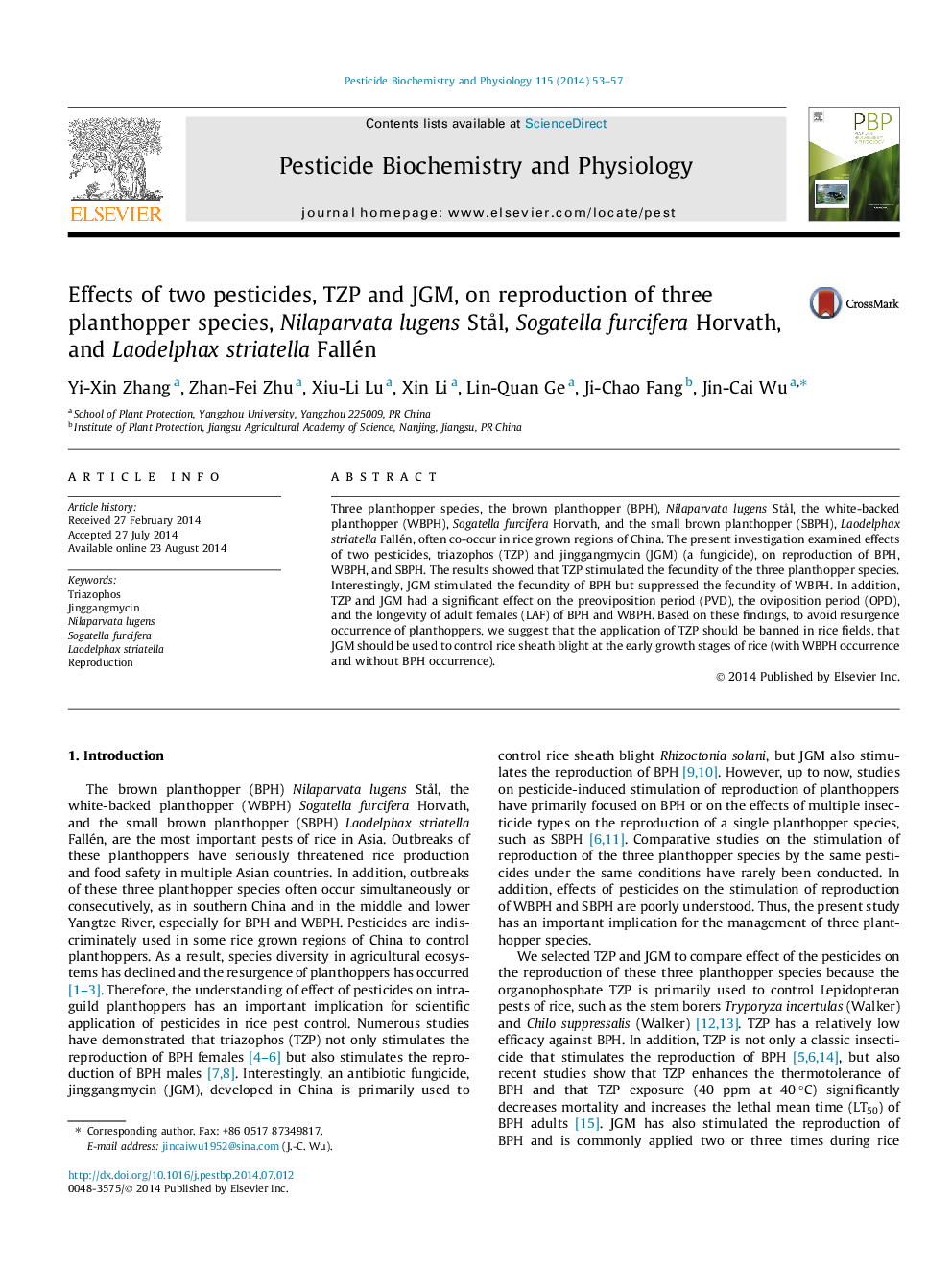| Article ID | Journal | Published Year | Pages | File Type |
|---|---|---|---|---|
| 2009134 | Pesticide Biochemistry and Physiology | 2014 | 5 Pages |
•Triazophos stimulates fecundity of rice planthoppers.•A fungicide jinggangmycin stimulates the fecundity of BPH but suppresses the fecundity of WBPH.•Triazophos is not suitable for controlling rice planthoppers.•Jinggangmycin can be used in rice before BPH infestation.
Three planthopper species, the brown planthopper (BPH), Nilaparvata lugens Stål, the white-backed planthopper (WBPH), Sogatella furcifera Horvath, and the small brown planthopper (SBPH), Laodelphax striatella Fallén, often co-occur in rice grown regions of China. The present investigation examined effects of two pesticides, triazophos (TZP) and jinggangmycin (JGM) (a fungicide), on reproduction of BPH, WBPH, and SBPH. The results showed that TZP stimulated the fecundity of the three planthopper species. Interestingly, JGM stimulated the fecundity of BPH but suppressed the fecundity of WBPH. In addition, TZP and JGM had a significant effect on the preoviposition period (PVD), the oviposition period (OPD), and the longevity of adult females (LAF) of BPH and WBPH. Based on these findings, to avoid resurgence occurrence of planthoppers, we suggest that the application of TZP should be banned in rice fields, that JGM should be used to control rice sheath blight at the early growth stages of rice (with WBPH occurrence and without BPH occurrence).
Graphical abstractTriazophos stimulated the reproduction of BPH and WBPH. Jinggangmycin stimulated the reproduction of BPH but suppressed the reproduction of WBPH.Figure optionsDownload full-size imageDownload as PowerPoint slide
